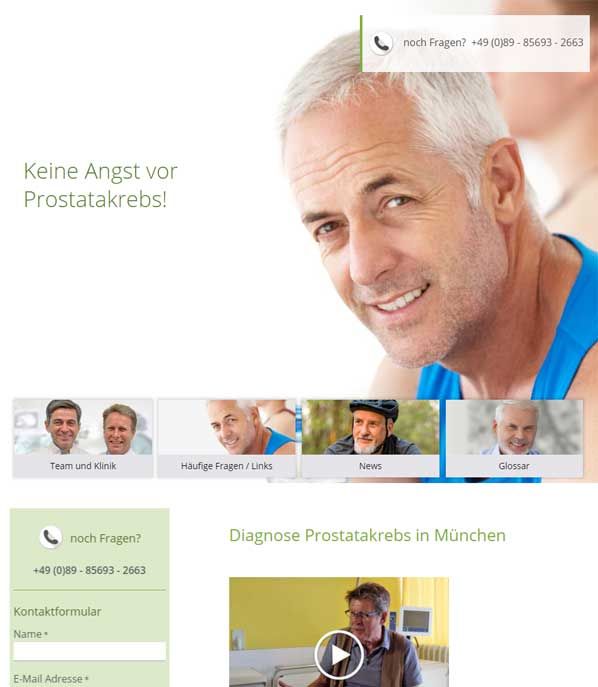Male incontinence
In this section, we want to talk about some special aspects of male incontinence.
Frequency
In older male patients (> 60 years) the frequency of urinary incontinence is about 19%. Pure stress incontinence rarely occurs; urge incontinence and mixed causes are more frequent.
Causes
The causes of male urinary incontinence are generally seen as lying in advanced age, immobility, neurological diseases, subvesical obstruction and previous surgery of the urinary tract. Thus, after a radical prostatectomy, a transurethral resection of the prostate or an adenomectomy, stress incontinence may occur or, in less frequent cases, urge incontinence.
Diagnosis
The diagnostic procedure includes taking the medical history (anamnesis) regarding the extent of incontinence, the level of distress caused by the condition, previous operations, medication, and previous neurological and urological disorders.
Further examinations include cystoscopy to assess the functioning of the sphincter muscle as well as other important findings such as urethral narrowing.
Urodynamic testing (measurement of the bladder pressure) may also be necessary to determine the cause of incontinence more precisely.
Therapy
The therapy depends on the cause and the personal circumstances of the patient. In the following, we have compiled a list of common methods of treatment for male incontinence.
Conservative therapy
Care and use of aids:
Condom urinal, wearing of pads or adult nappies (diapers), if necessary a permanent catheter (via the urethra, or in the form of a suprapubic catheter inserted through the abdominal wall).
Physiotherapy:
Pelvic floor physiotherapy to strengthen the sphincter muscle
Medication therapy:
For mixed urinary incontinence, anticholinergic therapy can be used to relieve the symptoms. Duloxetine, a serotonin reuptake inhibitor, acts specifically against stress incontinence. Duloxetine is not generally registered for use in men; it can only be prescribed as an "off-label" treatment. Before the start of use, the matter of cost coverage should be clarified with the health insurance provider. A therapy trial is only advised for mild cases of stress incontinence, and numerous contraindications must be considered.
In the case of urge incontinence, partial paralysis of the bladder muscle through the administration of botulinum toxin (botox) may lead to an improvement. This treatment must be repeated at certain intervals if the patient responds well.
Surgical therapy of male urinary incontinence
Implant injection into the sphincter:
In this case, the functioning of the sphincter is supported by a cushion of bulking material, e.g. collagen. This is done by injecting the material under the mucous membrane. Due to degradation processes, the treatment must be repeated at intervals.
Non-adjustable sling system:
In this case, a functional retrourethral ("behind the urethra") tape without bone anchoring (Advance tape®) is used.
A synthetic tape is placed around the urethra below the sphincter through three small skin incisions, thus returning the sphincter muscle to its original position and supporting it in its function. A prerequisite for this operation is residual functionality of the sphincter muscle, which must be confirmed in advance by a bladder examination.

Courtesy of American Medical Systems, www.americanmedicalsystems.com, Minnetonka, USA.
Artificial sphincter
This is the method of choice in the absence of sphincter activity or after failure of the above mentioned therapy options. A kind of hydraulic system is inserted surgically, whereby an artificial sphincter muscle, the so-called cuff, is placed around the urethra. This can then be operated, i.e. filled or emptied, by a fluid using a pump placed in the scrotum. This opens and closes the urethra, making continence possible again.

a pressure regulating balloon, a urethral cuff and a control pump.
Courtesy of American Medical Systems, www.americanmedicalsystems.com, Minnetonka, USA.
To operate the artificial sphincter, the patient should have some manual dexterity and some intellectual insight into the problems involved.







